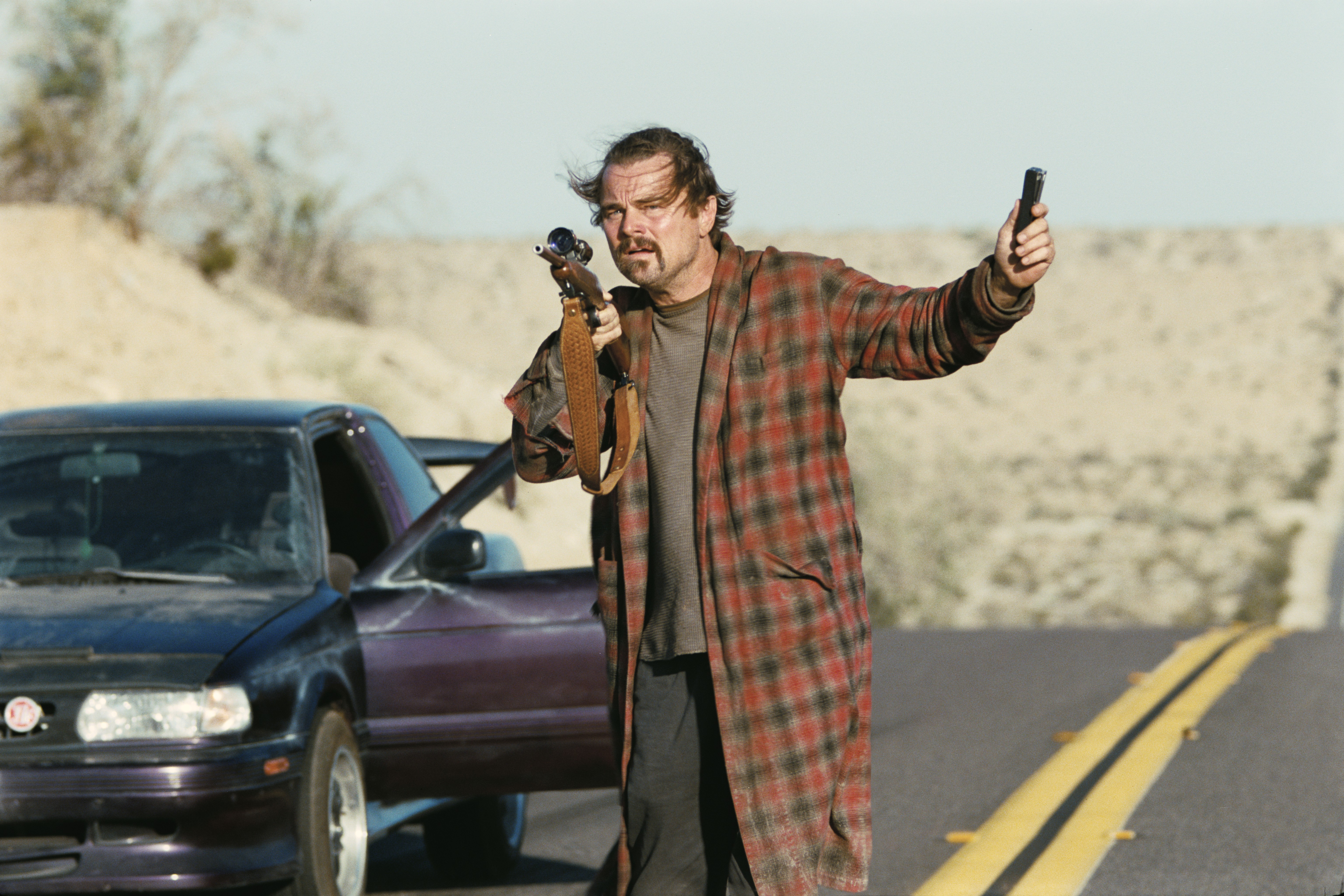Though his filmography is quite diverse, when it comes to the work of the writer-director Paul Thomas Anderson, it seems fair to say that public perception leans heavily in one direction. Films like Boogie Nights, Magnolia, There Will Be Blood, and The Master are emotionally heavy affairs, sometimes even harrowing, as heavily flawed characters give in to long-simmering tensions, leading to explosions of shocking violence.
The point is that Anderson’s work, despite having earned 11 Academy Award nominations — not to mention top accolades at the Cannes, Venice and Berlin film festivals — isn’t traditionally crowd-pleasing stuff.
This makes the filmmaker’s latest, One Battle After Another, unusual in its audience accessibility. That said, the action thriller ensemble isn’t without its idiosyncrasies, which challenge the viewer on a tonal front.
In One Battle After Another, inspired by Thomas Pynchon’s novel Vineland, Leonardo DiCaprio plays Bob Ferguson, a man who has largely lost himself in drugs and alcohol after going into hiding 16 years previously with his then infant daughter, Willa.
Bob’s reason for vanishing is self-preservation.
For years, alongside Willa’s mother, the fiery and unpredictable Perfidia Beverly Hills (Teyana Taylor), he was a member of a revolutionary group known as the French 75s, who staged prison breaks at Mexican border detention centres, and blew up banks and courts after hours to drive for individual freedom.
The French 75s’ long-time nemesis is military commander Steven Lockjaw (Sean Penn). In the present day, Lockjaw intensifies his efforts to capture the remaining 75s, turning to abductions and fully-armoured anti-immigration raids to achieve his goals.
It’s a front, though, for his real, personal target: the resourceful Willa (Chase Infiniti), who immediately goes on the run. Bob, meanwhile, must try to remember all his freedom fighter protocols, evade Lockjaw and reunite with his daughter.
/file/dailymaverick/wp-content/uploads/2025/09/one-battle-sean-penn-embed.jpg)
/file/dailymaverick/wp-content/uploads/2025/09/download-5.jpg)
Frantic energy
Told in chronological order, the 162-minute One Battle After Another is never dull. Contemporary events are propelled by a frantic energy, mirroring Bob’s paranoia and panic.
Anderson draws on his stylistic staples to underline characters’ messy desperation, with loads of handheld shots over shoulders and behind vehicles to encourage viewer immersion. Then there’s the use of intrusive music that is suddenly muted to maximise the impact of key moments.
One Battle After Another is peppered with strikingly staged moments, making it a very stylish watch — but not in a distractingly conscious way. The film is releasing in many locations on Imax, if you really want to brand its imagery onto your brain.
To clarify, One Battle After Another never strives to be “cool”, like, say, Martin McDonagh’s Seven Psychopaths or any number of Tarantino efforts. It’s just that Anderson’s film feels like a tonal cousin to these movies in that it flirts with artifice and unexpected humour.
Character names like Lockjaw, Bob’s insistence on wearing a tartan bathrobe for the whole movie, and the five-minute appearance of rifle-wielding, dope-growing nuns are just examples of the vein of unreality that runs through proceedings.
Auteur Anderson must have a reason for this approach, but it’s often jarring to process scenes that show realistic street clashes between protesters and police, and the inhumane conditions of holding cells, alongside interludes centred on a secret society of Maga-esque bigots who call themselves the Christmas Adventurers with a completely straight face.
The film is often as absurd as it is uncomfortable.
The clash of credible and cartoon occurs on a performance level as well. You have actors like Regina Hall delivering real-world emotion as her ex-freedom fighter struggles with fear, anger born of betrayal, and guilt. Yet, she appears alongside Penn’s overt, occasionally comical embodiment of toxic masculinity pushed to warping point. As an example, a comment about his tight shirt produces a knee-jerk reaction of “I’m not gay.”
/file/dailymaverick/wp-content/uploads/2025/09/film-review-one-battle-after-another.jpg)
One Battle After Another runs the full acting spectrum, with Infiniti impressing massively on the naturalistic side, DiCaprio a likeable hot mess who you could easily bump into on the street, and a scene-stealing Benicio del Toro as Sergio, a karate academy sensei with a reassuring ability to stay calm under pressure.
/file/dailymaverick/wp-content/uploads/2025/09/MV5BNzc2MzY4NDYtOTgyOC00MzU1LTlmMjMtM2Q3YTllOWMwMjU3XkEyXkFqcGc%40._V1_.jpg)
If you really want a sense of what to expect from One Battle After Another, the final scene in the official trailer, showing an interaction between DiCaprio and Del Toro, provides a very good indication of the film’s madcap energy.
One Battle After Another makes its case as the most mainstream of Anderson’s movies. But that doesn’t mean it’s not still wacky, and therefore a bit too way-out for some viewers. DM
The film is in cinemas from Friday, 26 September, and you can expect it to feature strongly this coming awards season. This review was first published on PFangirl.




 Leonardo DiCaprio in Paul Thomas Anderson's One Battle After Another. (Photo: Warner Bros)
Leonardo DiCaprio in Paul Thomas Anderson's One Battle After Another. (Photo: Warner Bros)